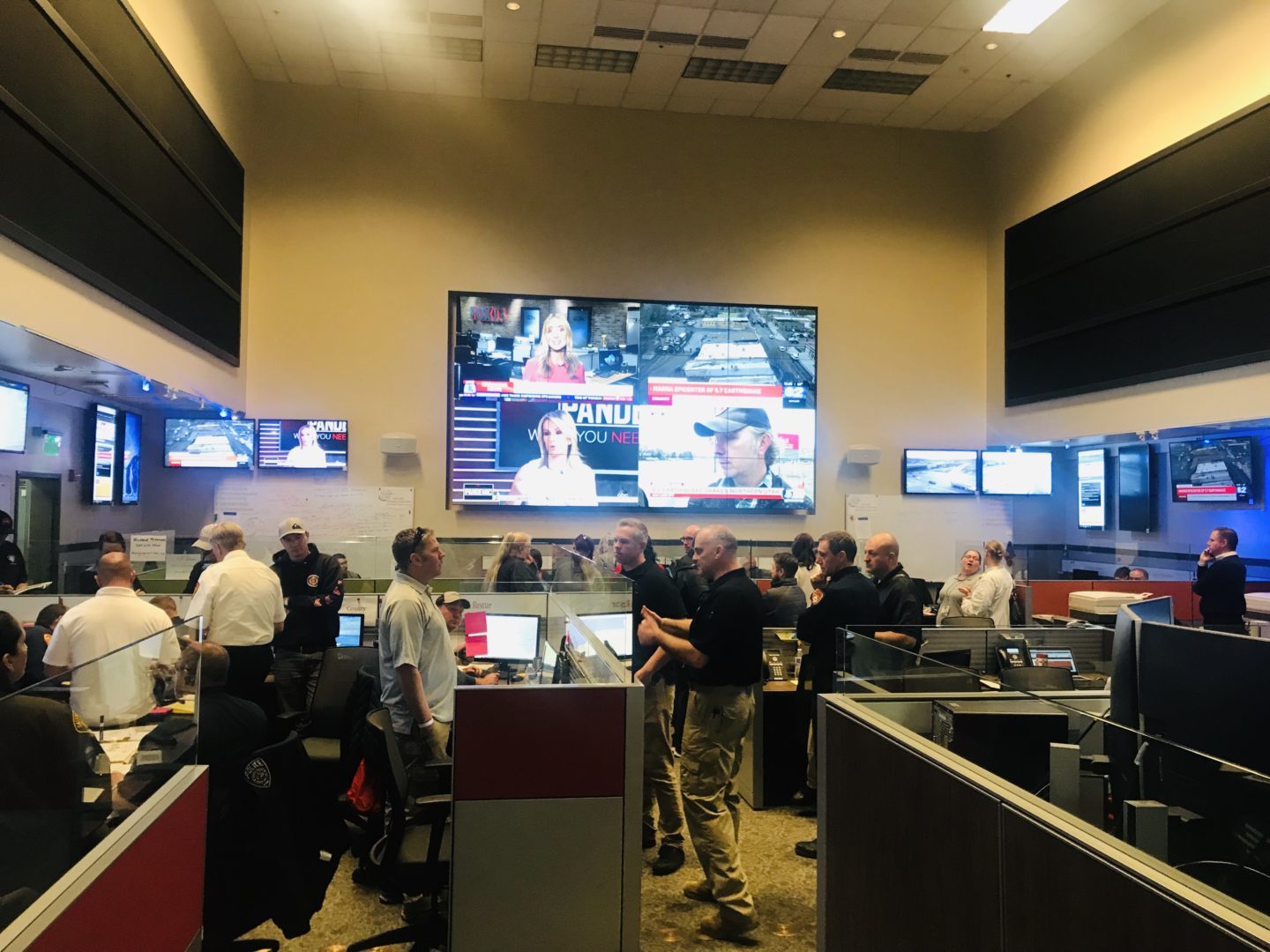
Helpful Resources
Local Emergency Planning Committee
The Local Emergency Planning Committee (LEPC) exists pursuant to 42 United States Code Section 1101 and Utah Code Annotated 63-5-5 and consists of 13 municipalities and more than 400 businesses.
EPCRA contains four major provisions:

Planning for chemical emergency

Emergency notification of chemical accidents and releases

Reporting of hazardous chemical inventories (Tier Two Reports)

Toxic chemical release reporting

The Salt Lake County (LEPC) consists of multiple agencies and businesses and allows collaboration between responders, the private sector, and the business sector to understand the hazards, hazardous material sites, and highly dangerous areas throughout the county, trying to identify the best ways to deal with these various hazards and plan for the whole community.
Starting with the reporting year 2024, the Salt Lake County LEPC will be rolling out a new reporting process. Instead of submitting your electronic T2s file to the LEPC email address (saltlakecountylepc@unifiedfire.org), you will upload your electronic T2s file, your Safety Data Sheets, and floor plans in a PDF format to the new portal. Staff is currently being trained, and new processes are being validated.
The upload portal will be on the website by December 1, 2024.
LEPC Tier II Conference
LEPC Conference
Wednesday, January 8
Emergency Operations Center
3380 South 900 West
Salt Lake City, UT 84119
Meetings
LEPC Meetings are held every second Wednesday of the month at 10am
Salt Lake County Emergency Management,
3380 South 900 West, South Salt Lake, UT 84119
Join the LEPC
If you’re interested in being a part of the Local Emergency Planning Committee, send us a note by clicking the button below.
Upcoming Meetings
| Town of Alta | Chris Otto | Cotto@townofalta.com |
| Town of Brighton | Jane Martain | janemartain@brighton.utah.gov |
| City of Bluffdale | Bart Barton | babarton@bluffdale.com |
| Cottonwood Heights | Paul Brenneman | pbrenneman@ch.utah.gov |
| Draper City | Robert Lambert | Robert.lambert@draper.ut.us |
| Herriman City | Brent Adamson | badamson@herrimanpd.org |
| City of Holladay | Allison Jester | ajester@holladayut.gov |
| Midvale | Brad Jewett | bjewett@unifiedfire.org |
| Millcreek | Chris Catalano | CCatalano@millcreekUT.gov |
| Municipal Service District/Townships: Kearns, Magna, White City, Copperton, Emigration | Brad Jewett | bjewett@unifiedfire.org |
| Murray | Nick Haskin | nhaskin@murray.utah.gov |
| Riverton | Jason Jones | jjones@rivertonpd.org |
| Salt Lake City | Ty Shepherd | Tyler.Shepherd@slcgov.com |
| Sandy City | Amy DeNeff | adeneff@sandy.utah.gov |
| South Jordan | Aaron Sainsbury | asainsbury@sjc.utah.gov |
| South Salt Lake | Yasmin Abbyad | yabbyad@sslc.gov |
| Taylorsville | Jay Ziolkowski | jayz@taylorsvilleut.gov |
| West Jordan | Jeffory Mulcahy | Jeff.mulcahy@westjordan.utah.gov |
| West Valley | John Evans | John.evans@wvc-ut.gov |
| SLCo Emergency Manager | Tara Behunin | tbehunin@unifiefire.org |
| LEPC Chair | Ron Lund | rlund@slco.org |
| LEPC Secretary | Valerie Greensides | vgreensides@unifiedfire.org |
| SLCo LEPC | SLCoEM.org | saltlakecountylepc@unifiedfire.org |
| National Weather Service | Kevin Barjenbruch | Kevin.barjenbruch@noaa.gov |
How can individuals find their LEPC?
In response to EPCRA planning requirements, the Utah legislature enacted the Hazardous Chemical Emergency Planning and Information Act, which established the “Hazardous Chemical Emergency Response Commission” and authorized the Commission to carry out all EPCRA requirements. The Commission is composed of representatives from the Utah Department of Public Safety, and the Department of Environmental Quality.
https://www.epa.gov/epcra/state-emergency-response-commissions-contacts
Can anyone be a member or attend meetings?
Membership includes state and local elected officials, law enforcement, emergency medical and fire personnel, emergency management personnel, civil defense workers, public health, environmental, hospital, and transportation officials, industry representatives, news media public/community members, and owners and operators of facilities subject to the planning requirements of EPCRA. However, this is an open public meeting, anyone can attend.
Why was the LEPC formed?
After the December 1984 Union Carbide gas leak incident in Bhopal, India which killed over 15,000 people, the President signed into law the Superfund Amendments and Reauthorization Act (SARA) on October 17, 1986. Title III of SARA is also known as EPCRA. One of the first actions of the Act was for each Governor to appoint a State Emergency Response Commission (SERC). This commission divided the state into Local Emergency Planning Districts (LEPD’s) and appointed members of that community to the Local Emergency Planning Committee (LEPC). The law mandates emergency planning efforts at the state, tribal and local levels and provides citizens and emergency responders with information concerning potential chemical hazards present in their communities.
What is the SERC?
The purpose of the State Emergency Response Commission (SERC) is to coordinate hazardous chemicals planning and carry out the mandate of the Emergency Planning and Community Right-to-Know Act of 1986 (EPCRA). The SERC is responsible for establishing state hazardous chemical emergency preparedness, response, and community right-to-know programs as required by EPCRA.
What are the benefits of being involved in LEPC?
The LEPC serves as a forum to aid in the discussion and preparedness on emergency planning and response. Active LEPCs can provide training and exercises as well as assistance in planning and the submission of Tier II reports.
Additional Information and Resources
Hazard Clean Up Guidance
https://tcem.org/lepc/hazmat-clean-up-guidance/
Utah Spills Database
https://eqspillsps.deq.utah.gov/Search_Public.aspx